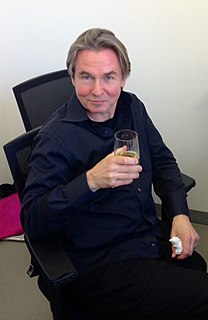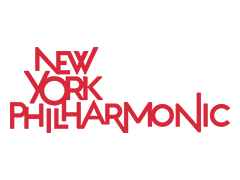
The Pittsburgh Symphony Orchestra (PSO) is an American orchestra based in Pittsburgh, Pennsylvania. The orchestra's home is Heinz Hall, located in Pittsburgh's Cultural District.

Lorin Varencove Maazel was an American conductor, violinist and composer. Making his debut at the conducting podium at the age of eight, he embarked on his career in earnest in 1953, establishing a reputation in European concert halls by 1960 but, by comparison, his career in the U.S. progressed far more slowly. However, he would later be appointed music director of the Cleveland Orchestra, Orchestre National de France, Pittsburgh Symphony Orchestra, Bavarian Radio Symphony Orchestra, and the New York Philharmonic, among other posts. Maazel was well-regarded in baton technique and possessed a photographic memory for scores. Described as mercurial and forbidding in rehearsal, he mellowed in old age.

Esa-Pekka Salonen is a Finnish orchestral conductor and composer. He is principal conductor and artistic advisor of the Philharmonia Orchestra in London, conductor laureate of the Los Angeles Philharmonic, and music director-designate of the San Francisco Symphony.

Hilary Hahn is an American violinist. In her career, she has performed throughout the world both as a soloist with leading orchestras and conductors and as a recitalist. She also built a reputation as a champion of contemporary music. Several composers have written works especially for her, including concerti by Edgar Meyer and Jennifer Higdon and partitas by Antón García Abril.
Philip Smith is an American classical trumpet player. He is former Principal Trumpet with the New York Philharmonic and played with the orchestra from 1978 to 2014. Smith, born in the United Kingdom, is from a Salvation Army background. He assumed the co-principal position in the New York Philharmonic in June 1978 and the principal position in 1988. He also is a supporter of brass bands, performing with various groups of distinction.
On the Transmigration of Souls is a composition for orchestra, chorus, children's choir, and pre-recorded tape by the American composer John Adams. It was commissioned by the New York Philharmonic and Lincoln Center's Great Performers shortly after the September 11 terrorist attacks of 2001. Adams began writing the piece in late January 2002, and the music was premiered by the New York Philharmonic on September 19, 2002 at Avery Fisher Hall. The work is composed in a single movement and has a duration of approximately 25 minutes. Its sheet music is published by Boosey & Hawkes.
Jörgen van Rijen is Principal Trombone at the Royal Concertgebouw Orchestra (RCO) in Amsterdam. He is also a founding member of the Dutch trombone ensemble, New Trombone Collective, and Professor of Trombone at the Amsterdam Conservatory.

The Munich Philharmonic is a German symphony orchestra located in the city of Munich. It is one of Munich's four principal orchestras, along with the Bavarian Radio Symphony Orchestra, the Munich Radio Orchestra and the Bavarian State Orchestra. Since 1985, the orchestra has been housed in the Gasteig Culture Centre.
Christopher Chapman Rouse is an American composer. Though he has written for various ensembles, Rouse is primarily known for his orchestral compositions, including a Requiem, eleven concertos, and five symphonies. His work has received numerous accolades, including the Kennedy Center Friedheim Award, the Grammy Award for Best Classical Contemporary Composition, and the Pulitzer Prize for Music. Rouse was the composer-in-residence for the New York Philharmonic from 2012 to 2015.
Béla Bartók's Piano Concerto No. 2 in G major, Sz. 95, BB 101 (1930–31) is the second of three piano concerti, and is notorious for being one of the most difficult pieces in the repertoire.
Piano Concerto "The Fire" is the first piano concerto by the Chinese composer Tan Dun. It was commissioned by the New York Philharmonic under the direction of Lorin Maazel. Its premiere was given on 9 April 2008, by the Chinese pianist Lang Lang and the New York Philharmonic Orchestra conducted by Leonard Slatkin in Avery Fisher Hall, New York City. It has an approximate duration of 30 minutes. and is written in three movements:
- Lento
- Adagio melancholia
- Allegretto
L'arbre des songes is a violin concerto written by Henri Dutilleux between 1983 and 1985. It is dedicated to Isaac Stern.
The Trombone Concerto is a concerto for trombone and orchestra by the American composer Christopher Rouse. The work was commissioned by the New York Philharmonic for its principal trombonist Joseph Alessi. It was completed on April 5, 1991, and was first performed by Alessi and the New York Philharmonic conducted by Leonard Slatkin on December 30, 1992, in Avery Fisher Hall, New York City. The concerto is dedicated to the composer and conductor Leonard Bernstein, who died suddenly October 14, 1990. In 1993, the work was awarded the Pulitzer Prize for Music.
Fanfare Ritmico is a single-movement orchestral composition by the American composer Jennifer Higdon. The work was commissioned by The Women's Philharmonic as part of The Fanfares Project. It was given its world premiere in March 2000 by conductor Apo Hsu and the Women's Philharmonic.
Dialogues is a composition for solo piano and chamber orchestra by the American composer Elliott Carter. The work was commissioned by the BBC for the pianist Nicolas Hodges and completed in 2003. It was first performed on January 23, 2004 at the Queen Elizabeth Hall in Southbank Centre, London, by Nicolas Hodges and the London Sinfonietta under the conductor Oliver Knussen. The piece was a finalist for the 2005 Pulitzer Prize for Music. In 2012, Carter composed a followup to the piece Dialogues II for the conductor Daniel Barenboim's 70th birthday.
The Concerto for Orchestra is an orchestral composition by the American composer Marc Neikrug. The work was commissioned by the New York Philharmonic and was completed in May 2011. It was given its world premiere by the New York Philharmonic under the conductor Alan Gilbert at Avery Fisher Hall on April 26, 2012. The concerto is dedicated to Alan Gilbert.
The Violin Concerto No. 2 is a composition for violin solo and orchestra by the Finnish composer Magnus Lindberg. The work was jointly commissioned by the London Philharmonic Orchestra, the Berlin Philharmonic, Swedish Radio Symphony Orchestra, Radio France, and New York Philharmonic. Its world premiere was given by the violinist Frank Peter Zimmermann and the London Philharmonic Orchestra under the direction of Jaap van Zweden at Royal Festival Hall, London, on December 9, 2015. The piece is dedicated to Zimmermann.
Parada is an orchestral composition by the Finnish composer Magnus Lindberg. The piece was composed for the music festival Related Rocks which celebrates the works of Lindberg and related composers. Its world premiere was given at The Anvil, Basingstoke on February 6, 2002 by the Philharmonia Orchestra under the direction of Esa-Pekka Salonen, to whom the work is dedicated.






